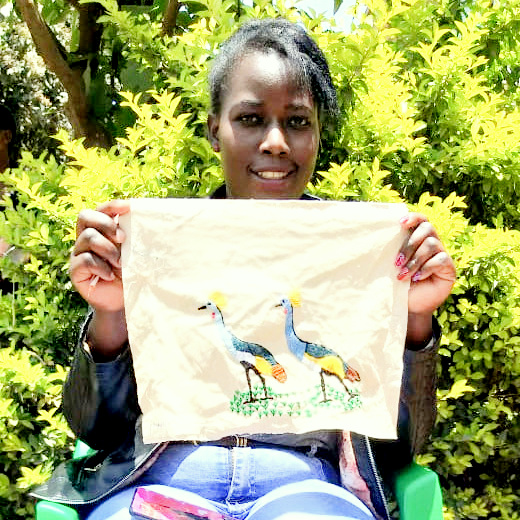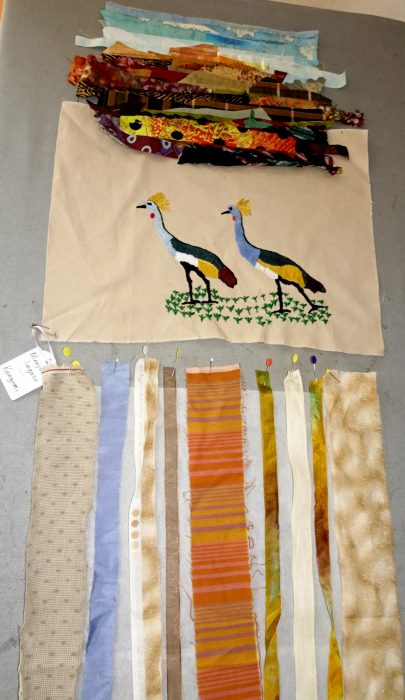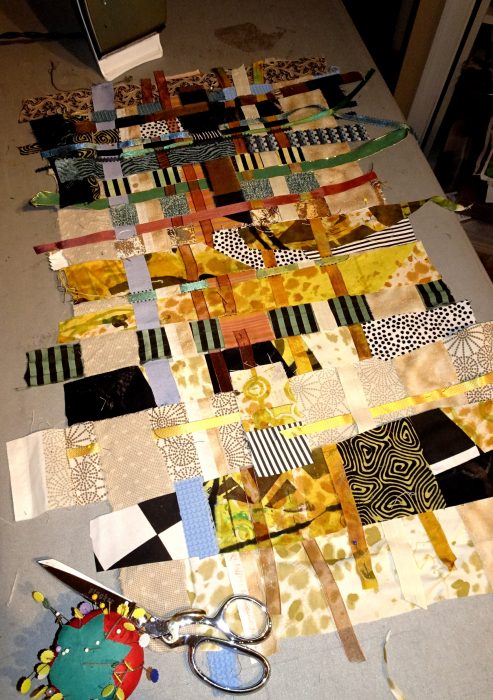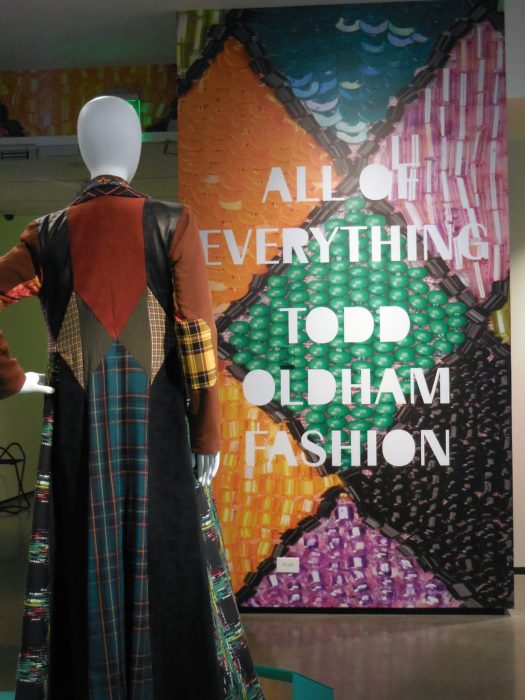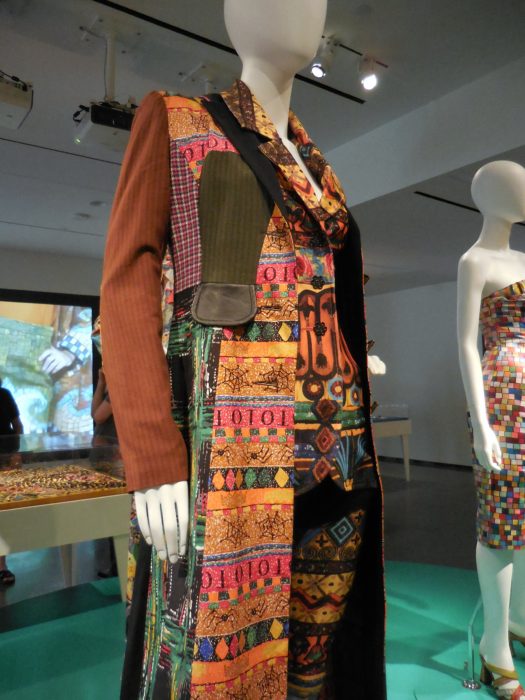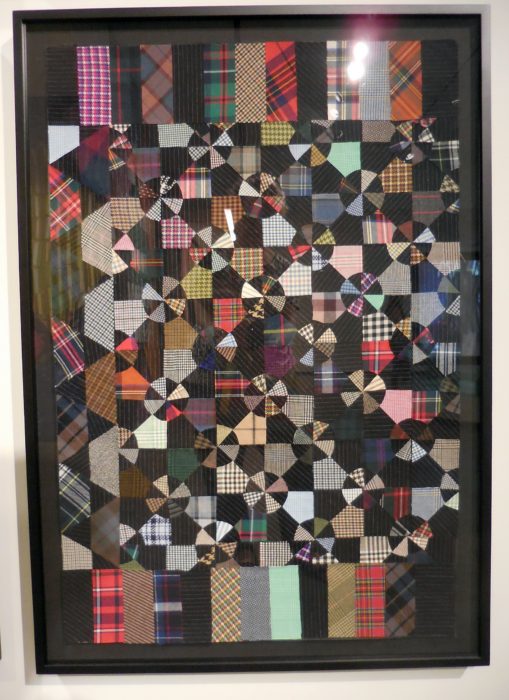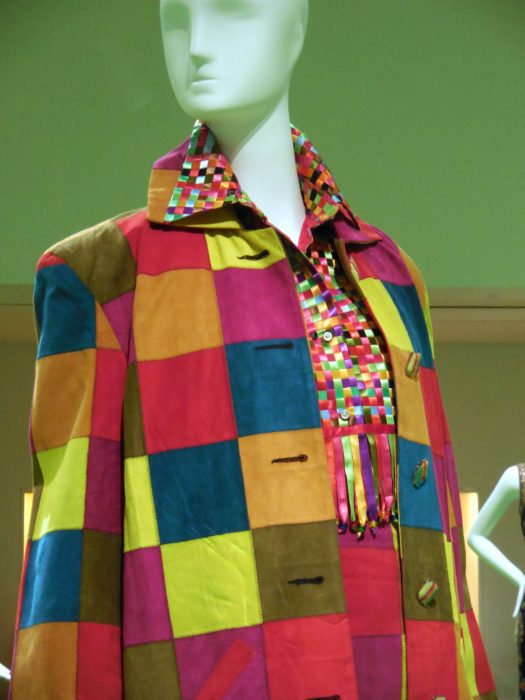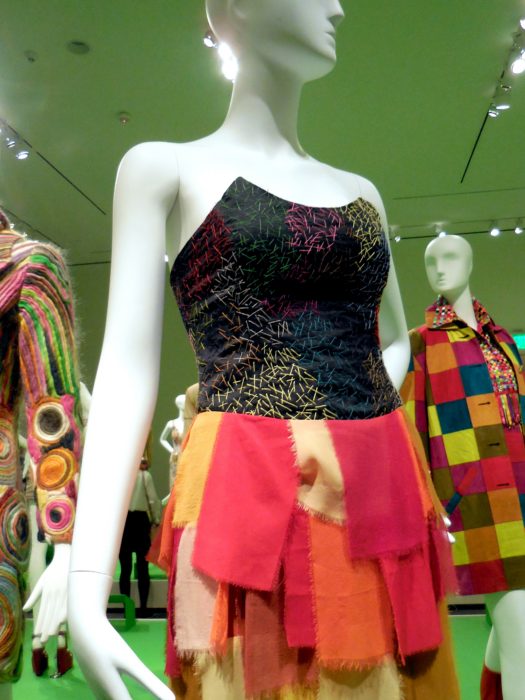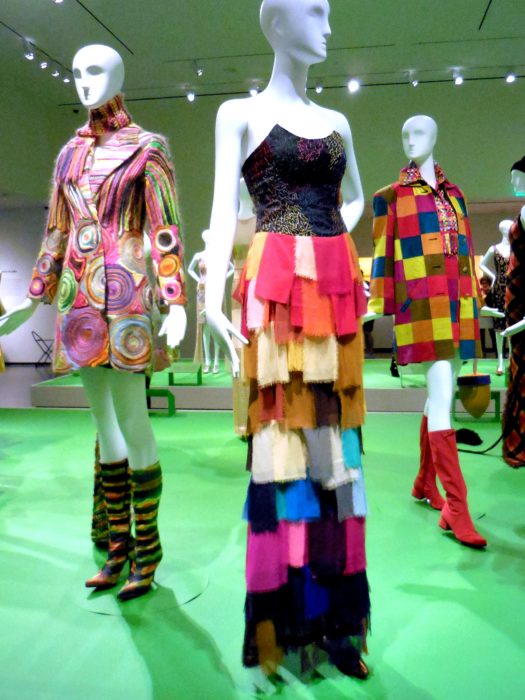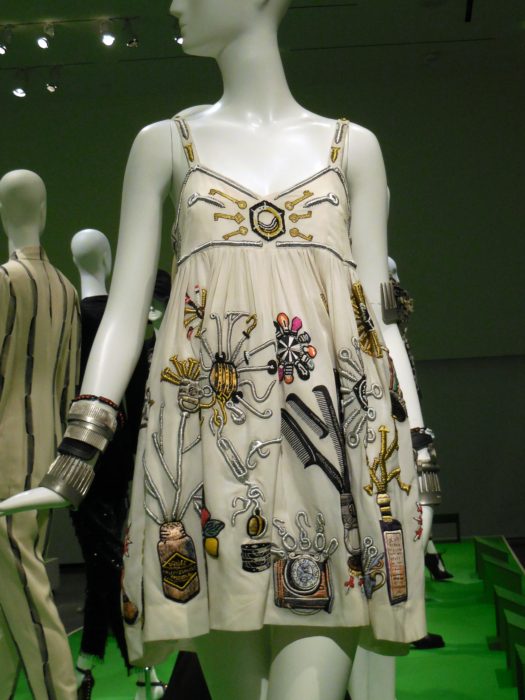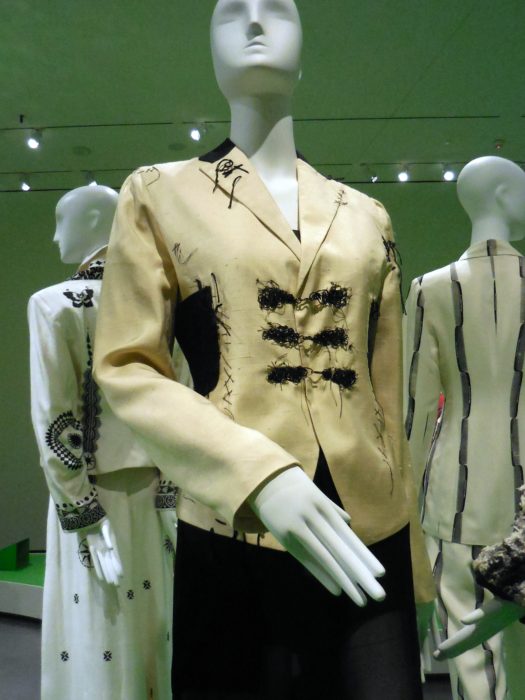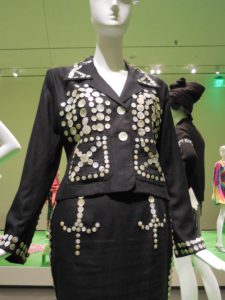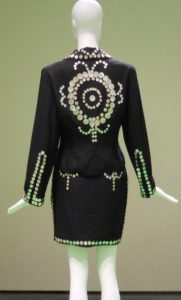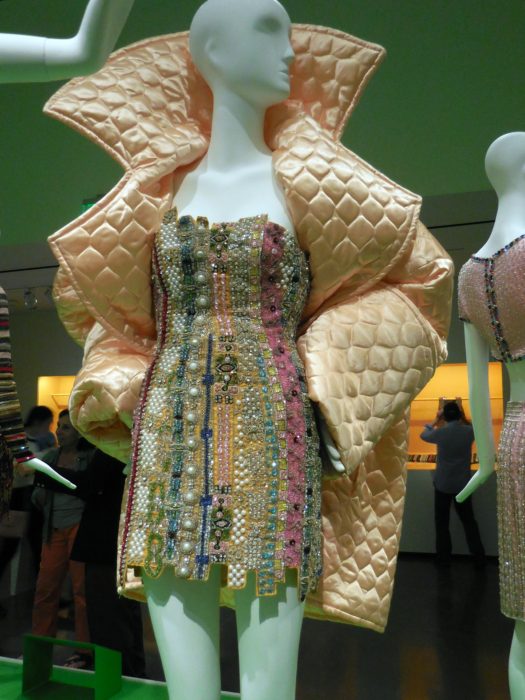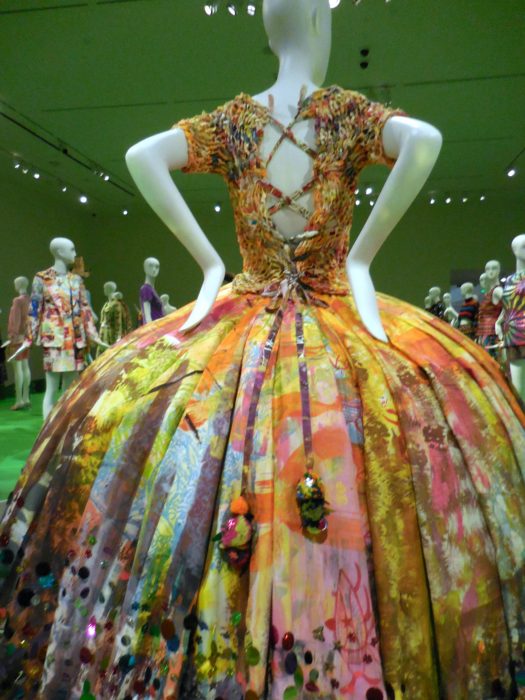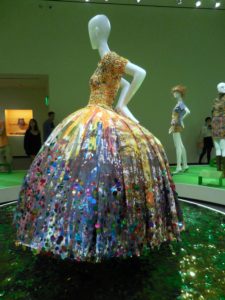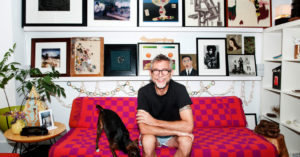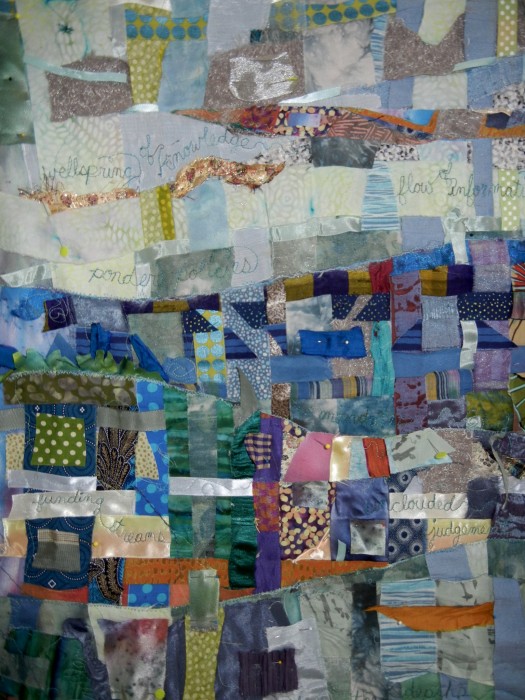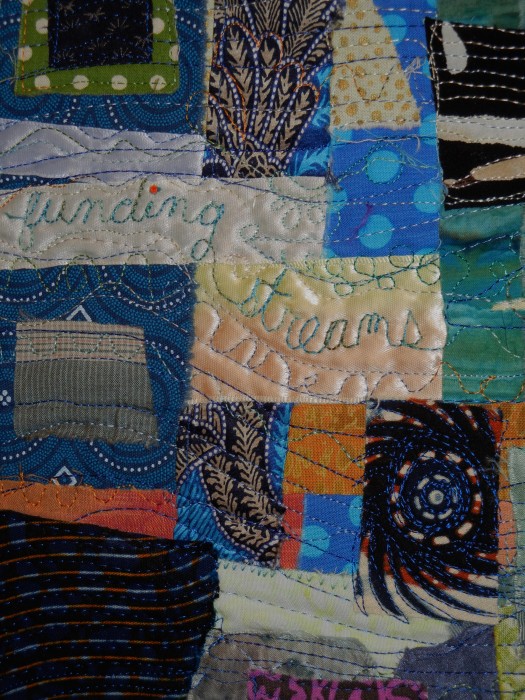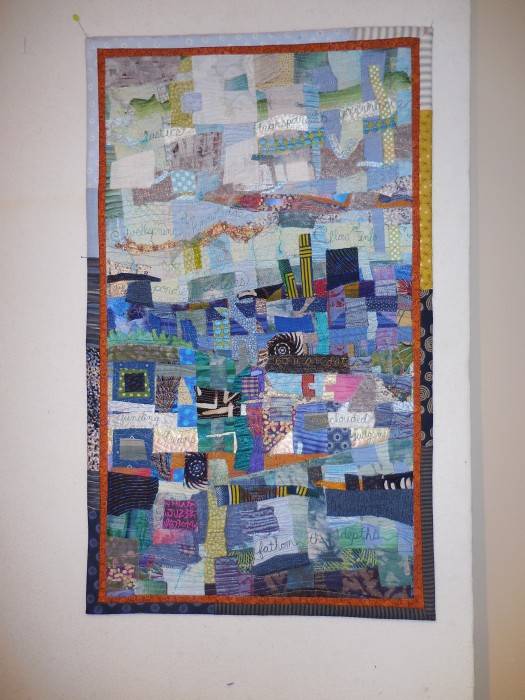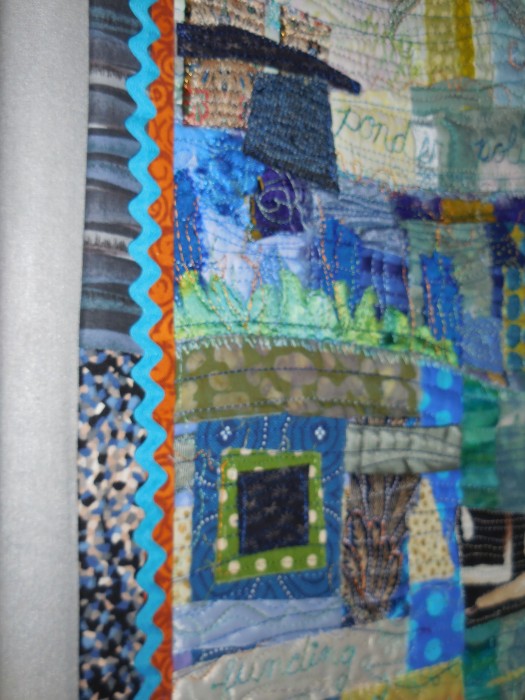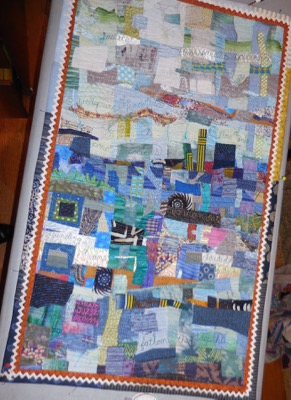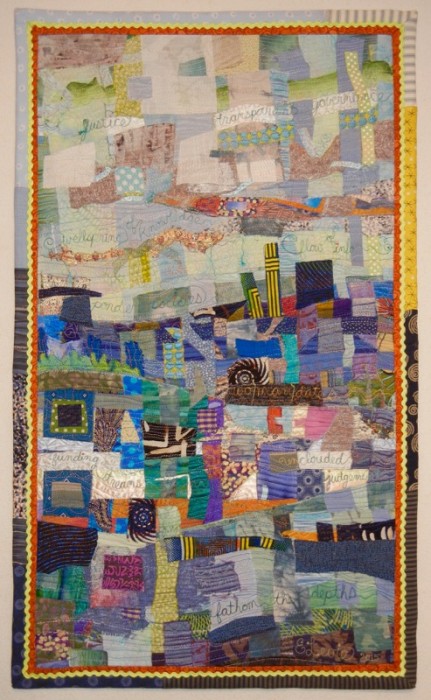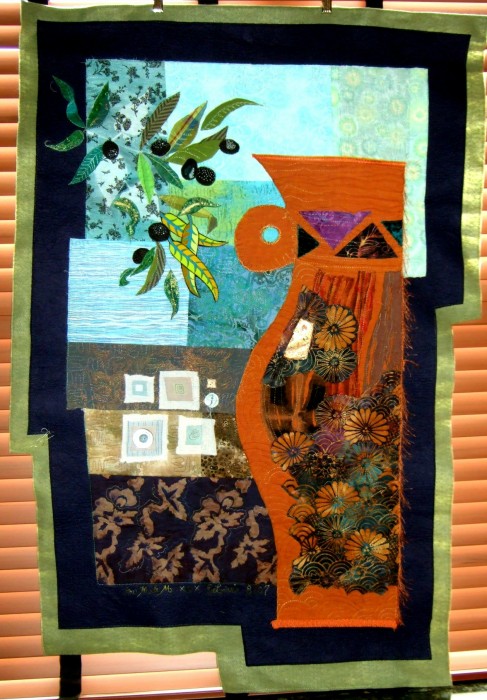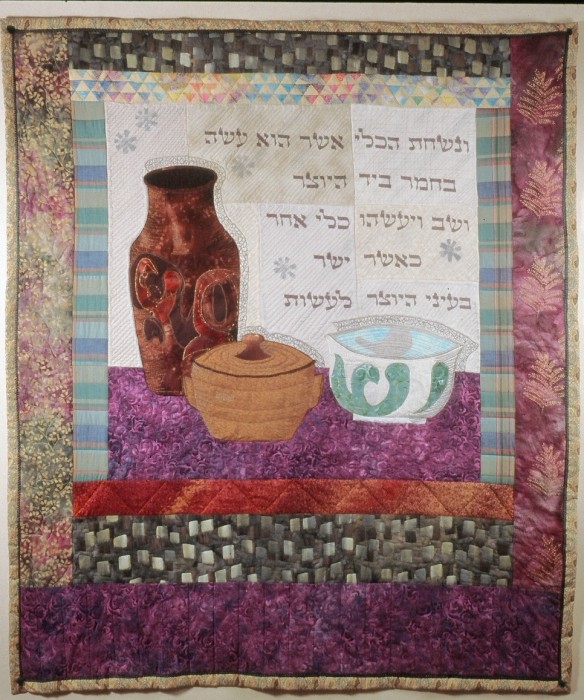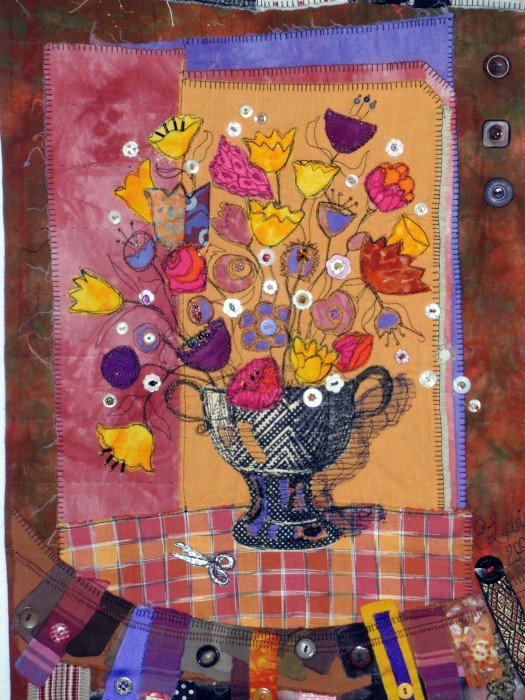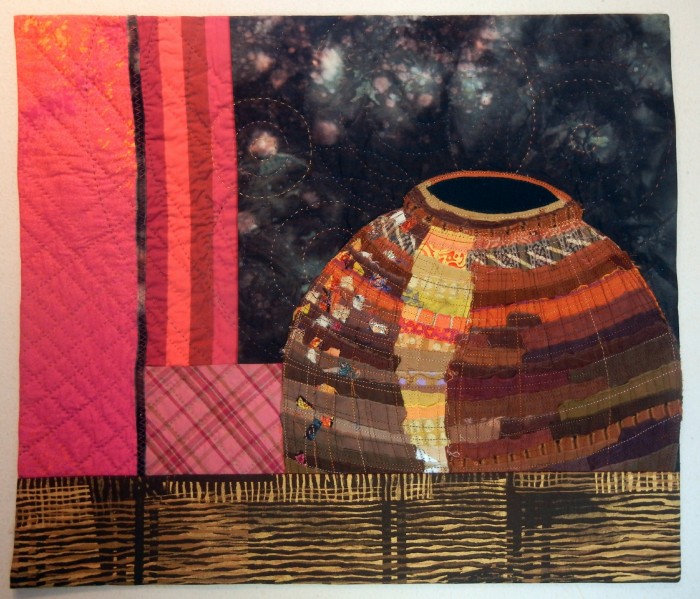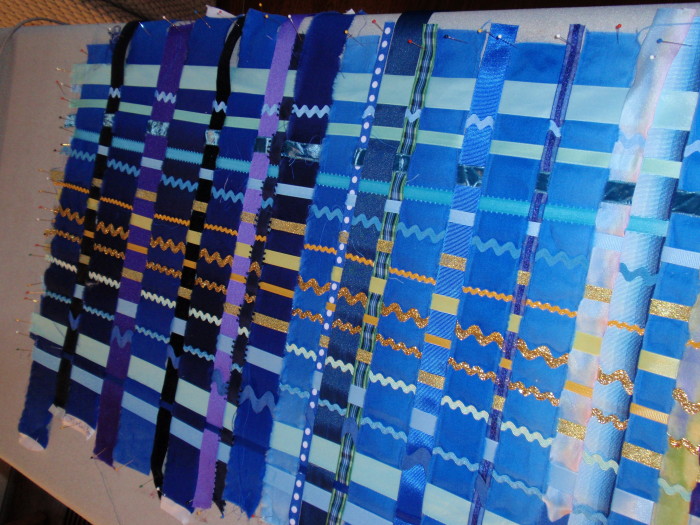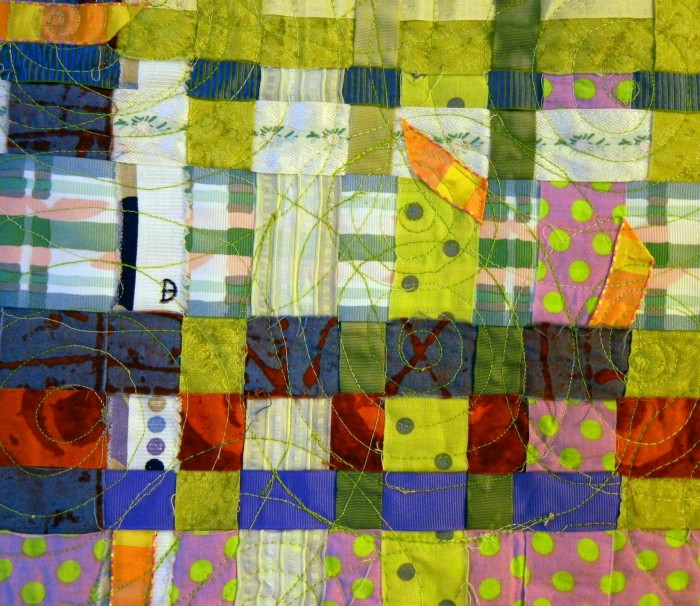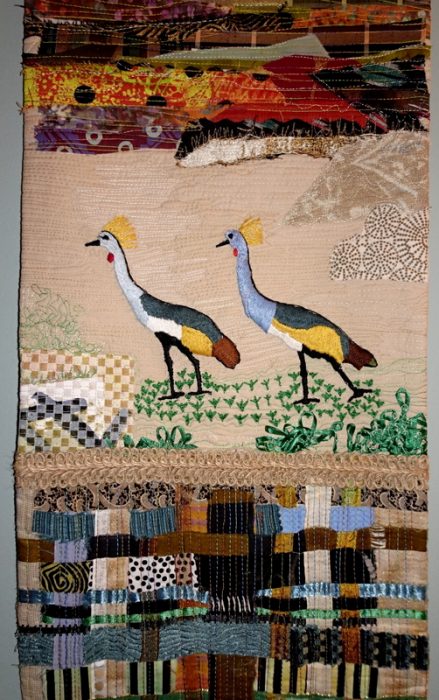
The skinny quilt is finished! I sure hope my Kenyan collaborator Meryline Ingaso likes it, and that folks out there will want to bid on it when the Advocacy Project holds its auction of art quilts later this year, which will raise funds for services that will benefit Meryline and her Sister Artists.
But first, here’s the skinny on African crested cranes: thanks to storyteller.travel for this info and video!
1–The African crested crane is quite the looker: light blue eyes, bright red neck, and gorgeous plumage on its head. It stands at over 3 feet tall and from wing-tip to wing-tip can measure over 6 feet. Despite such a wingspan, the adult weighs less than 8 pounds. Hollowed out honeycomb-like bones means the bird is light enough to take flight.
2–It’s the national bird of Uganda (right next door to Kenya) and featured on the Ugandan flag. The marshes and flat grasslands of both Kenya and Uganda offer the birds everything they love in a habitat. Rather than migrating, crested cranes tend to stay in place throughout the year. However, their habitat is slowly being depleted, due to over-use of water for irrigating fields of crops. So, the population is declining and the crested crane has been designated as endangered.
3–The Crested Crane is quite the omnivore gourmand, eating leaves and seeds from a variety of plants, as well as insects, worms, and frogs. These birds have also been seen eating small fish, snakes, and various aquatic eggs.
4–Romance is in the air: Crested cranes choose a partner early on, and mate for life. The only cranes to nest in trees, they build nests that are high up, safe from the reach of predators. Females typically lay between 2 and 4 eggs in a clutch, and the eggs are ready to hatch in about 30 days. They are then ready to breed when they reach 3 years of age, and given their long life-span — about 22 years, they have plenty of years to find a mate and lay lady lay.
4– Not just for courting and breeding, crested cranes love to dance at any time of the year. Young birds often join in the dancing.
Moving on, I think I managed to combine the three sections — raw-edge applique landscape, Meriline’s embroidery, and a woven expanse — into a cohesive whole, 12″ x 48″. The quilting certainly helped integrate and tame the disparate elements, especially the warp and weft strips of the bottom section.
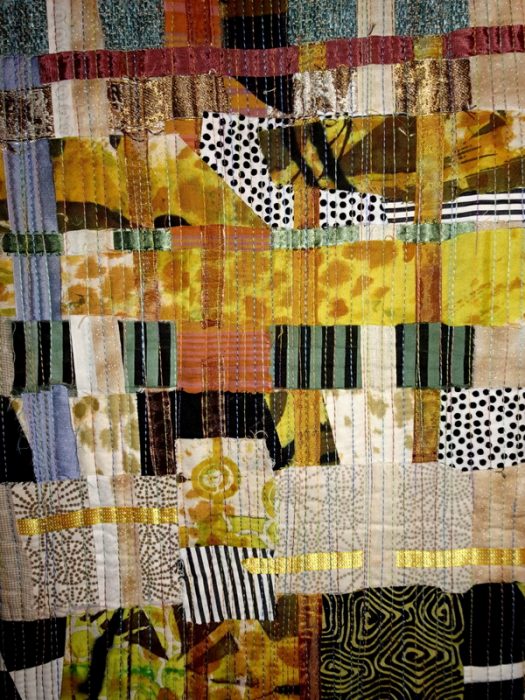
Facings along the long side edges kept the piece from feeling too circumscribed and hemmed in. African fabric for a top border, and a bottom border of batik couched with ribbon was, to my thinking, just enough definition.
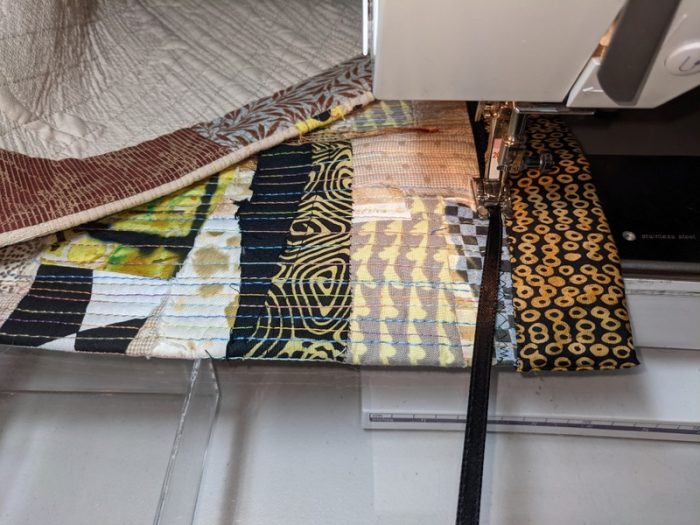
And here we are!



